ENCORE - THE ENERGY CRISIS OF THE MID-70S FORCED THE NHRA INTO ACTION
THE ENERGY CRISIS OF THE MID-70S FORCED THE NHRA INTO ACTION ...
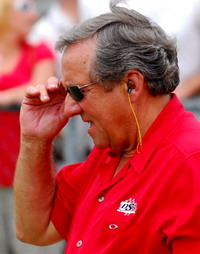
Don Schumacher was still an active Funny Car driver when the energy crisis of the mid-70s hit the United States with the force of a Category 5 hurricane. Thirty-five years later the owner of a multi-car drag racing operation has a front-row seat for a crisis of another nature.
Schumacher admitted his age and single-minded interest in racing kept him from taking the energy crisis too seriously, but now, as a seasoned race team owner, the nation’s economic situation, which bears some similarities to that long-ago energy crisis, has his full attention.
“In the early ‘70s, I was young and carefree to the point that I couldn’t say I truthfully identified enough with the energy crisis,” Schumacher admitted. “We found ways to get around it and continue to get on down the road.”
His escape was through friends who would help him circumvent the rationing rules he encountered by letting him fill the 300 – 400-gallon gas tanks neatly tucked away in the trailer.
“That kept us going down the road to match races and (kept) us in business,” he added.
If only he could find those same kinds of friends today, but in a position to approve a sponsorship agreement.
“The financial situation is a much more serious situation than the energy crisis was, and this time it’s worldwide,” he says
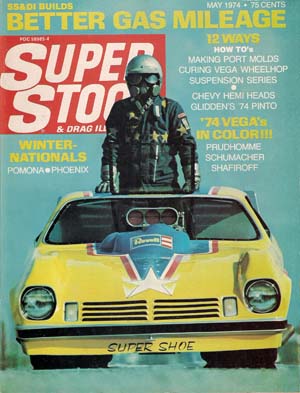
Schumacher considers his situation to be a little better than many of the other teams in drag racing whose sponsorship losses have forced their owners to park their teams.
Schumacher’s loss of the Mopar, Oakley and Rockstar Energy Drink sponsorships resulted in the parking of one team and, if not for a sponsorship deal brokered for newcomer Matt Hagan, could have seen Schumacher Racing down to the two Funny Cars driven by Ron Capps and Jack Beckman along with his son, Tony’s, Top Fuel dragster and the FRAM dragster driven by Cory McClenathan.
This is now, and back then, Schumacher agrees crises were handled differently. Back in 1974, NHRA Founder and President Wally Parks knew he had to address the situation and stepped forward with an impressive statement in the February 1, 1974 issue of National Dragster outlining the sanctioning body’s willingness to be proactive in seeking solutions for the energy crisis.
The resourceful Parks didn’t sidestep the issue. He stepped forward with a list of suggestions aimed not only at bringing relief to racers, fans and supporting entities, but for the country as a whole. The NHRA was one of the few motorsports entities to offer a proposal of relief.
The nationwide goal was to attain a 25% reduction in the amount of fuel used by both participants and promoters.
Parks offered the following suggestions in his missive.
No one track can be expected to produce savings in all the areas, but each operation's proportionate share will accrue to the end results -- a savings goal of 25 percent.
Following are some of the initial ways in which drag racing has offered to help conserve its use of critical energy fuels:
1. Reduction in the number of scheduled 1974 events.
2. Reduction in total operating hours per event.
3. Practical reductions in finalist fields per event.
4. Concentration on daytime events vs. night lighted.
5. Less illumination of non-critical areas at tracks.
6. Deletion of one day's qualifying at major meets.
7. Limitations on available total runs per car.
8. Emphasis on classes using non-critical fuels.
9. Encouragement of racers use of transportation pools.
10. Heavy promotion of fuel-economy measures at events.
These represent but a few of the feasible ways in which energy-source fuels can be saved without damage to the sport.
Parks then challenged the drag racing community to step up to the plate with the sanctioning body. “We've been a wasteful society, taking our affluence for granted and actually depriving ourselves of satisfactions we should have been enjoying in our freedom from want,” he wrote.
“Perhaps the energy crisis will focus more importance on things we've been doing for years and years -- good things that people in some other countries might never dream of accomplishing.
“If it happens that way, it'll be worth the small sacrifice we'll pay in making practical economy a bigger part of our lives.”
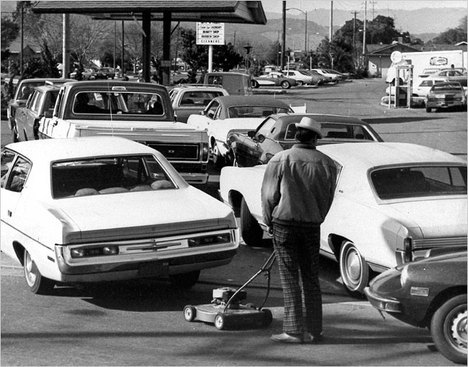
Back then Schumacher essentially ignored Parks’s outline. Today it’s a very different story.
Schumacher and other competitors and sponsors are wondering why the NHRA hasn’t, to date, publicly suggested a single initiative to address the current economic crisis.
Two teams who made the full NHRA POWERade Series tour in 2008 have been disbanded since December 13th due to a lack of sponsorship support. Over a half-dozen others have been seriously impacted by economic setbacks since the season finale in Pomona.
A sampling of those who won’t be back on a full-time basis are the likes of Bob Vandergriff (U.P.S.), Doug Herbert (Snap-on Tools), Hot Rod Fuller (CAT), Melanie Troxel (R2B2), J.R. Todd (Lucas Oil), David Grubnic (DHL), Hillary Will (KB Racing), Tommy Johnson Jr. (Monster) and Doug Kalitta (MAC Tools).
Jerry Archambeault, the NHRA’s VP of Public Relations and Communications, told CompetitionPlus.com that the NHRA has been working behind the scenes on new programs aimed to bring relief to the teams and race fans during this difficult economic crisis. He declined to list any specific details outside of pointing out drag racing’s value.
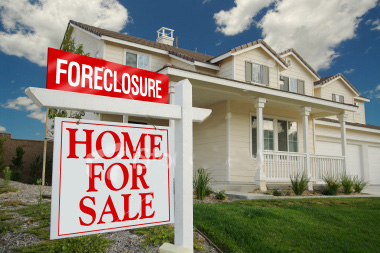
“We still have a pretty good price in terms of entertainment value,” Archambeault said. “We need to continue to work with the current sponsors to put those promotions into the marketplace to get those fans out to the stores and to the race track. That helps everyone out.
“We plan to bring more creative promotions to the table in 2009.”
Archambeault said the NHRA plans to bring more marketing promotions forth during the tough economic times.
As far as reducing events and limiting the scheduled days at NHRA Full Throttle events, he said that changing those aspects of the current plan couldn’t be done without affecting other more crucial areas of the overall program.
“We are looking at everything we can possibly but there is a balance in place,” Archambeault said. “If you change the number of runs then you change the value of the ticket for those who are attending the event. You can’t look at just one thing in a vacuum and make a decision.”
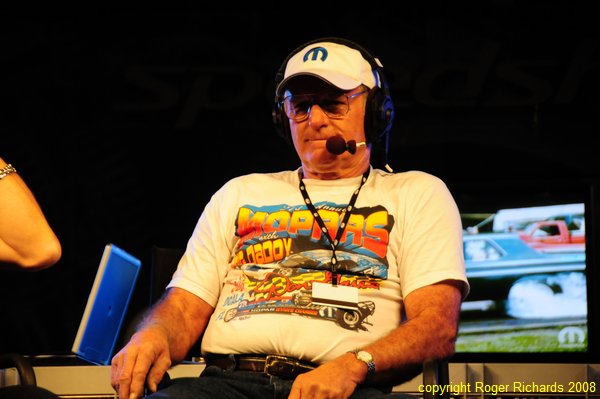
Case in point, Archambeault explained, limiting the number of qualifying runs lowers the ticket value. A lower ticket value affects the purse structure. A lower purse structure further affects many of the teams who are already cash-strapped. A purse restructure would adversely affect those regional racers who attend a limited amount of events.
Archambeault told CompetitionPlus.com that IMG, the sports marketing agency hired by the NHRA last season, has turned up the wick in their work with teams to procure sponsorships and bring awareness to the NHRA brand.
The unfortunate thing, he says, is that IMG had begun to make large strides forward and were prepared for a strong 2009 when the economic crisis hit, effectively slowing the marketplace.
In the meantime, the NHRA has taken steps to ensure their profitability by increasing membership fees by $5 as well as an increase in hospitality fees for professional teams who require additional pit space to accommodate their sponsorship obligations. The NHRA hasn’t raised spectator ticket prices for the coming season.
Don Garlits was an active competitor during the 1974 energy crisis and got caught up in the call to action by at least one of the three sanctioning bodies governing drag racing.
His advice is for racers to ride out the storm and not act hastily.
“Larry Carrier was the most out-spoken, (and) stupidly canceled many of our (paid in) appearances,” Garlits recalls. “I got nervous and canceled my order for a real nice ‘Chaparral’ trailer that was being (custom) built for me special. What a stupid move on my part.”
Schumacher agrees with the Garlits suggestion to a certain extent. He’s of the opinion that he and many of the race teams have too much of an investment in drag racing to sit idly by and do nothing.
“I haven’t seen that NHRA is doing a thing,” Schumacher said. “To be honest, I haven’t seen at all where they have acknowledged that there is any kind of a financial crisis. They’re increasing costs to teams and in memberships from what I’ve read. It wouldn’t surprise me if they increase other fees and costs.
“Everyone will have to find a way to pay the increased costs when every other business, sanctioning body and sports teams are finding ways to lower the costs to the fans, sponsors and the teams to keep everything as viable and fluid as possible. I haven’t found one single way they are doing something to make the situation better on anyone else but themselves.”





































